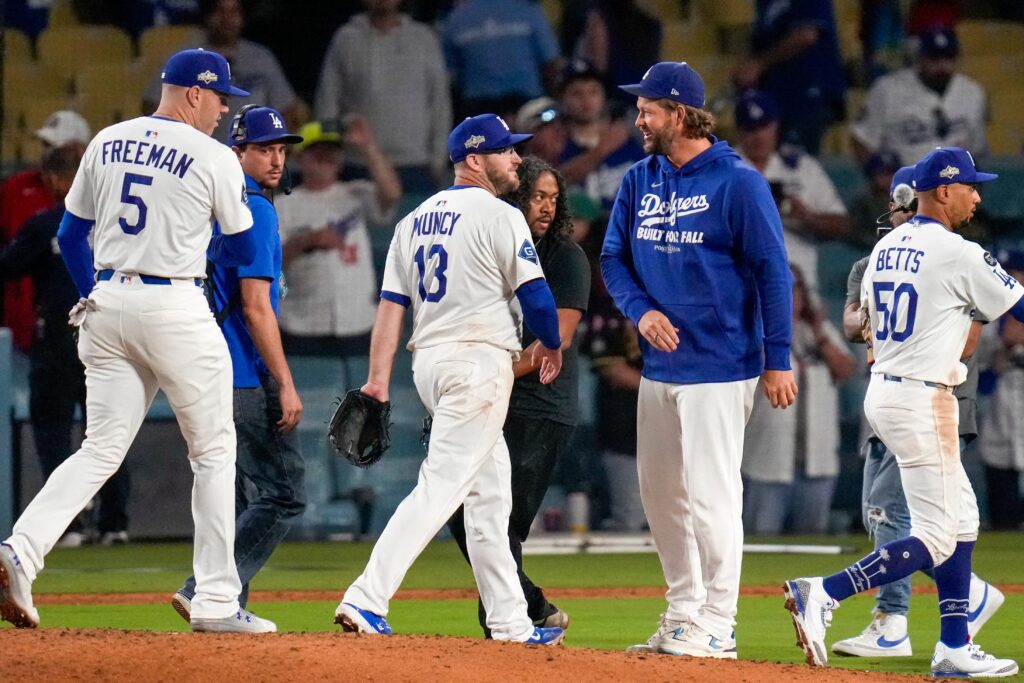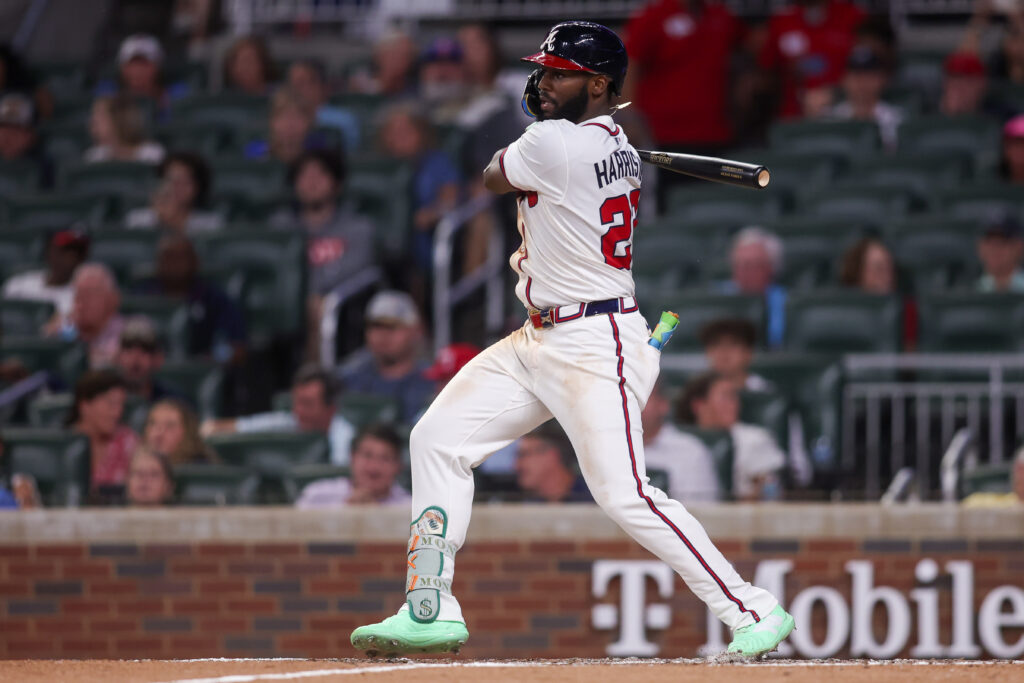With the All-Star break quickly approaching, we are now just within one week of the 2024 MLB draft. The draft will kick off on Sunday, July 14th and will run through the 16th, leading up to the home run derby. Since the college season ended roughly two weeks ago, there has been some shuffling happening on a lot of draft boards. While there’s a lot of focus on the first round, the following rounds are really where teams have the chance to take advantage of solid draft strategy and separate themselves from the pack. I wanted to highlight a few prospects that probably won’t have their name called in the first round, but still have the potential to make a difference for a big league organization out of the following rounds. Despite all of these guys likely missing the first round, I think they all have the talent to compete with first-round names.
Five Underrated Players in the 2024 MLB Draft
1. Jared Jones, 1B, LSU
The big first baseman out of LSU is one of my favorite position players in this year’s draft, but hasn’t received a whole lot of love from draft boards. He’s the lowest ranking draft prospect among these five players at #119 on MLB Pipeline, with very few mock drafts landing him a spot any earlier than the third round. Jones’s profile is a bit of a hit-or-miss type of prospect which does keep him out of the first two rounds for good reason, but he has the type of upside with the bat that can land him a spot in the second round if a team really believes in him.
Standing at 6’4″ and weighing 250 pounds, it’s hard to overlook his plate presence. He’s an intimidating hitter in the box, and not just because of his massive frame. He has posted some of the top exit velocities and home run distances in this year’s class and put on a show at MLB’s draft combine in June. He obviously possesses some of the best raw power in the class and it has translated to game power as well. He hit 28 home runs for LSU in 2024 and led the Tigers with a .747 SLG.
There are obvious concerns with the hit tool, as there are with most players with his power profile, but he has seen year-to-year improvement in that department. The main thing holding him back is his defensive versatility and athleticism. At best, he’s likely a below-average defensive first baseman and will probably move to a full-time DH role. He has a 65-grade arm that would work great at third base, but his range defensively has a long way to go. Despite the shortcomings on that side of the ball, I don’t think it would be crazy for a team that’s looking to add a big bat to their system to take a flyer on him early on.
2. Caleb Bonemer, SS, Okemos HS (MI)
Unlike Jared Jones, Caleb Bonemer’s name has actually bounced around in first first-round discussion. He is regarded as one of the top high school infield prospects but hasn’t quite reached that upper echelon of players like Konnor Griffin, Bryce Rainer, and Kellon Lindsey. Bonemer currently ranks at #71 on MLB Pipeline after he dropped a fair amount since the beginning of the season due to his 2024 spring season not producing the same numbers as his 2023 or showcase performances.
Despite that, Bonemer managed to win Michigan’s Gatorade Player of the Year for a second consecutive season. It’s easy to look past the numbers when you dive into the overall profile. Like most high-end high school prospects, he’s a very well-rounded athlete who makes a difference in more ways than one. First of all, I’m a big fan of his swing. He has little to no stride which makes handling higher velocity a lot easier and also has some of the best bad speed in the prep class. With that being said, he has a lot more game power to tap into at the next level and I think that will come naturally with more maturity at the plate. Defensively, he’s your prototypical high school athlete who can pick it from the left side of the infield. He has a 50-grade glove along with a 55-grade arm which might profile him as a third baseman down the road, but he has the athleticism and baseball instinct to stick at shortstop.
Given he’s playing short now, I would imagine whoever drafts him would give him that shot to make it work at shortstop. He also has a 50-grade run tool on the bases, but it seems like scouts like it more than what the grade says because of his IQ on the field. I see Bonemer as a safe choice in the second round, but I also wouldn’t be surprised to hear his name called late in the first.
3. Ethan Anderson, C/1B, Virginia
Ethan Anderson just missed my list highlighting the top five catchers in this year’s draft but has earned himself a spot in the conversation after finishing 2024 as a semifinalist for the Buster Posey award. Anderson comes in at #78 on MLB Pipeline but is yet another player that I would strongly consider taking higher than what the draft boards are telling me. Anderson caught throughout high school but didn’t see consistent time behind the plate until just this year when he logged 26 games.
Prior to 2024, he had only caught eight games in his freshman year and still managed to make a name for himself as one of the top catchers in the draft. The lack of experience at the amateur level and being a lot bigger than the average catcher does hurt his stock a bit in the long term, but I do feel he can stick at the position at the pro level if he’s given enough playing time. Regardless, his bat should give him the path to playing time. He’s one of the few advanced switch-hitters in the class and hits well from both sides of the plate. He posted a line of .331/.435/.508 in 2024 along with eight home runs and led the Cavaliers with 20 doubles. There aren’t a lot of questions around the hit tool as he can spray the ball around the field from both sides of the plate and he happens to walk more than he strikes out.
There is a lot more power upside from his left side as he’s much more of a line-drive hitter from the right side. As a hitter with a solid 6’2″ 215-pound frame, I would trust that he can tap into more power at the next level given his feel to hit. If he does end up moving off of catcher, he’ll end up at first base, so he will have to either really lean into that power, or really lean into his defensive ability behind the plate. I see him as an impact player either way that has the potential to go early on in the second round.
4. Aiden May, RHP, Oregon State
The lone starting pitcher on this list is Aiden May, the 21-year-old right-hander out of Oregon State. He comes in ranked at #82 on the Pipeline after an impressive junior campaign, but like the other guys highlighted here, hasn’t quite received the same recognition as some of the higher profile players in this year’s draft. Despite an injury that sidelined May for a month, he was the ace of the Beavers rotation. Over 14 starts, he managed a team-leading 3.05 ERA and a 1.14 WHIP along with 84 strikeouts over 73 innings.
His command was great as well as he yielded just a 7.4 BB% to his 27.0 K%. He did a great job of missing barrels as he allowed just four home runs, good for a minuscule 0.49 HR/9. With all of these numbers, it’s hard not to see him starting at the next level. May’s bread and butter as a pitcher is his slider (often regarded as a sweeper) which has earned a 60 grade and would be one of the better sliders in the big leagues today. It’s his best pitch and he uses it the most which is actually a bit rare for a starter. We know that big league clubs love the sweeping sliders nowadays so I have a hard time imagining that there aren’t multiple organizations itching to get him in their system.
His 4-seam fastball is sub-par which can be a red flag, but has leveraged that into a solid sinker which is his second most used pitch. He has also flashed a cutter and a changeup which are essentially his sinker and slider with tighter shapes at different velocities. I would love to see him develop those two pitches to really give him a shot at becoming an ace at the next level. I see May as a safe option in the third round with second-round potential.
5. Noah Franco, OF/LHP, IMG Academy (FL)
Originally set to be one of the top high school players in the 2025 draft, Noah Franco reclassified this year making him 2024 eligible and one of the youngest players available in this year’s draft. On top of being one of the youngest players, he’s also one of the few legitimate two-way prospects available. Despite all of this, he only ranks at #92 on MLB Pipeline. He’s not Jac Caglianone by any means, but it seems like the scouts actually believe in his ability to be a two-player at the next level more than Caglianone.
On the mound, he sits at 93-95 mph from the left side with a big slider in the low to mid-80s. He has flashed a changeup as well which could use some time to develop. He throws all three pitches for strikes, so there isn’t much concern about command. The question is if he can miss enough bats, and given he has a great frame for a pitcher, he has room to add a lot of velocity and power on his pitches to do so. With a lot of two-way players, there is a certain side of the ball scouts are more convinced of. I don’t think that’s quite the case with Franco. His skills on the mound and at the plate are plus skills. With the bat, he has earned a 50-grade hit and power tool. Although they’ve received the same grade, it’s his hit tool that is carrying the offensive profile at the moment as he still has a lot of raw power and game power to grow into. The swing from the left side of the plate reminds me a lot of Cody Bellinger – it’s a steeper swing that creates a lot of loft, generating a lot of power through the zone with a big finish.
He currently plays first base where he’s a plus defender, but if he puts pitching away, it’s likely he would move to the outfield given he’s a great athlete with a very good arm. Given the overall package here, I’m honestly surprised Franco’s name hasn’t made its way into first-round conversation. Either way, his name should be called by the third round. He does have a commitment to TCU, so money is going to play a factor here.



